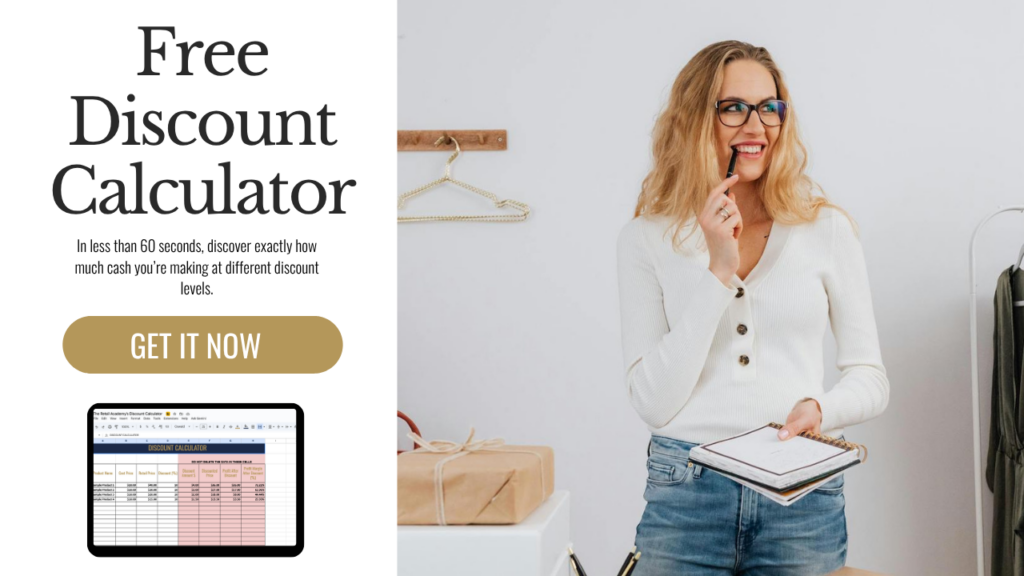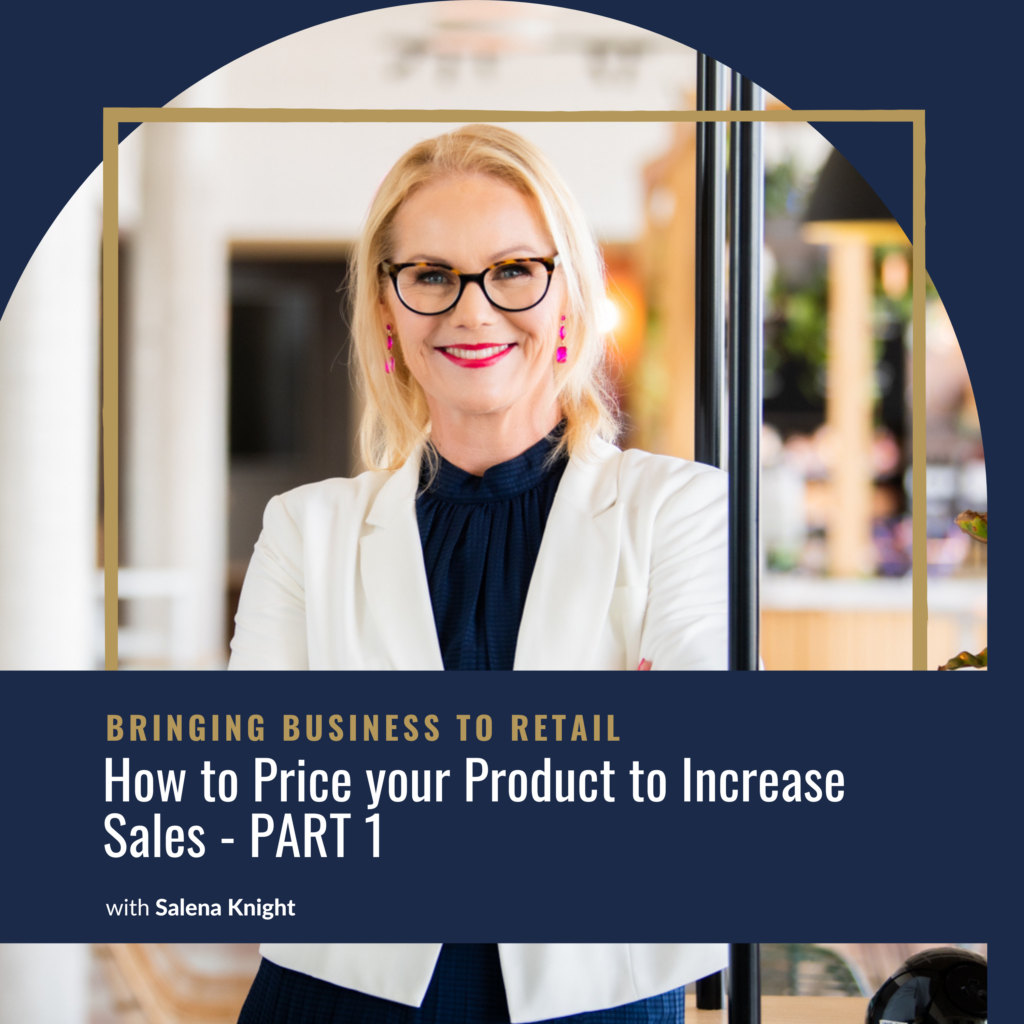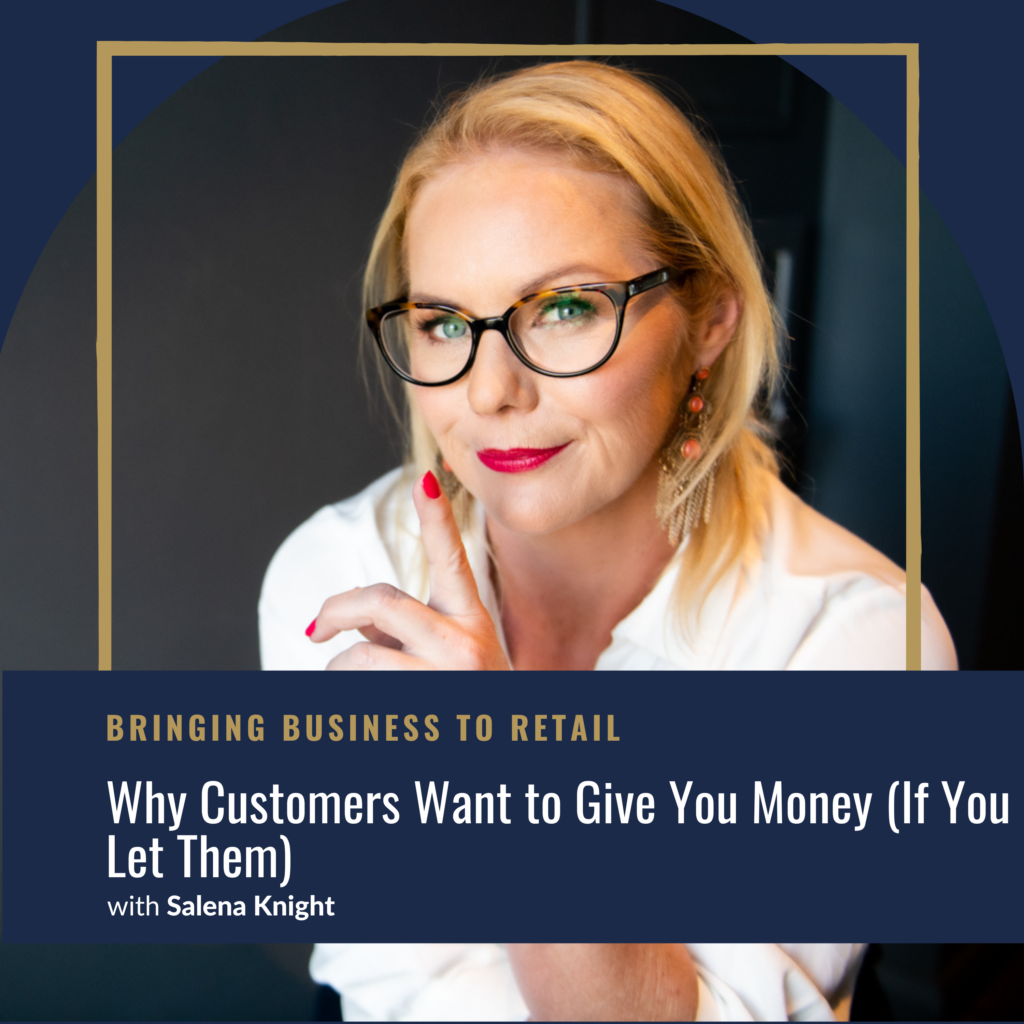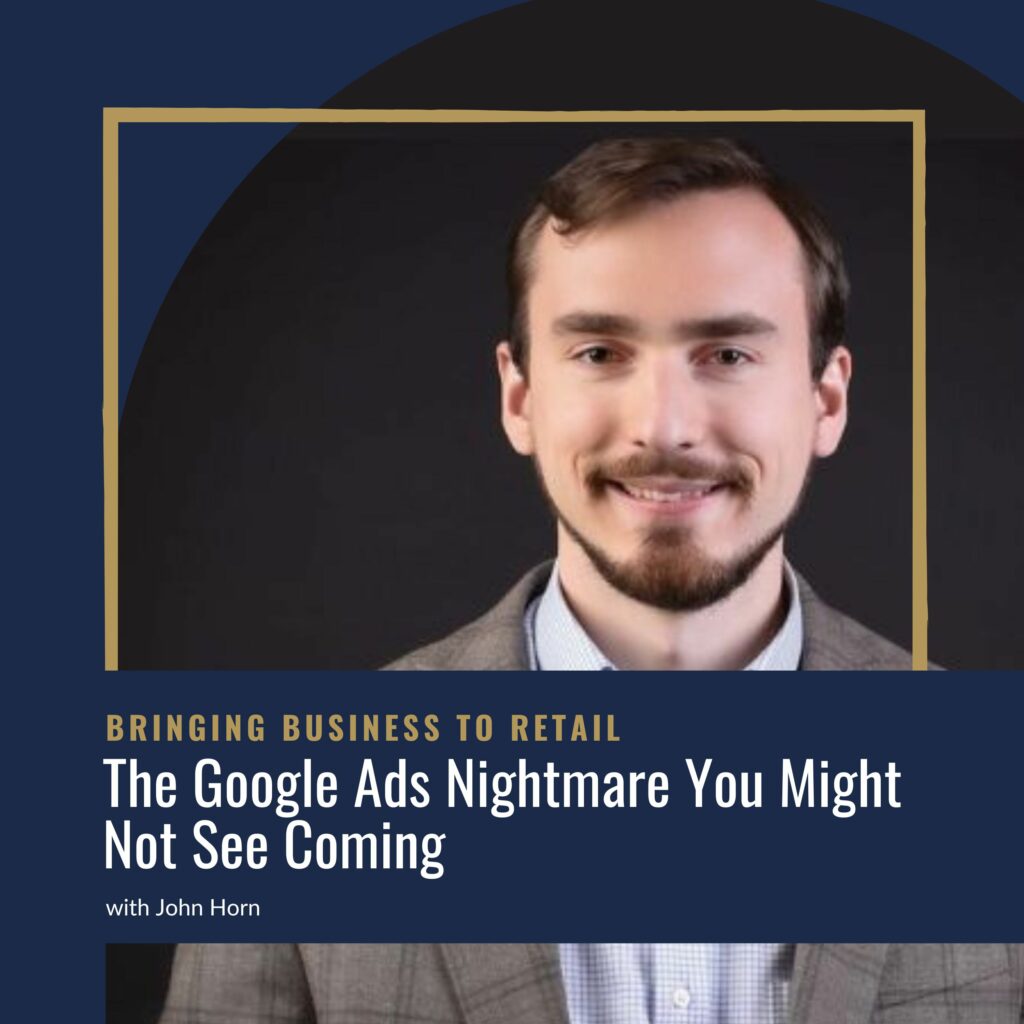
SHOW NOTES
I used to coast through Q4 assuming demand would do the work—and I left six figures on the table.
Busy doesn’t equal profitable.
In this episode, I unpack how being a passive shopkeeper kept my December AOV barely above July’s and the simple shifts that change everything: curate complete gift bundles and a clear premium tier, merchandise “pairs well with” so add-ons are obvious, train one friendly prompt per transaction, use real urgency (limited runs and shipping cut-offs), and capture emails with a Holiday Gift Guide to grow lifetime value.
I share the cringe-worthy math, a $35 onesie becomes a $128 gift set; a $65 skincare kit becomes a $143 “baby spa”, and a practical plan so you’re not panic-discounting when it’s busy.
If you want help building a Black Friday + holiday strategy that actually lifts AOV and profit, join me in the Scale Your Store Accelerator (starts Sept 29).
Takeaways
Q4 is your biggest opportunity, but busy ≠ profitable. Treat every shopper like they’re building a complete gift: bundle, position complements, offer a premium tier.
Use real urgency and capture emails so you can follow up and increase lifetime value. Track AOV, attach rate, conversion weekly, the $35 sale becomes $128 when you curate and ask.
Strategy beats seasonality every time.
Sal
A retailer recently asked me, Sal, what is Q4? And is that relevant to me? At that point, I realized I had fallen victim to something that we all do. When we are talking about something we're that we're familiar with, we fall into the pattern of talking jargon. So it doesn't matter if we're talking about a holiday or a business or even about our family and friends, those words that we slip into.
That are relevant to just that particular thing. In retail, we talk about our POS or our click through rate and things like that. So those words that we slip into can be quite alienating for people. If they don't know. It's that, you know, they're the words that if you know, you know, now I was embarrassed because it said to me that I clearly hadn't taken the time.
To explain what I meant. So Q4 is the end of the year. The year is broken into quarters. So we have January, February, March, which is usually Q1. We have April, may, June, which is Q2, July, August, September, which is Q3, which is where we are now. And then Q4 is October, November, December. And it can be a little bit confusing because sometimes in, in big corporate, if you've come from a corporate background, they might call quarters differently based on their financial year.
And that is not always January to December, but in retail for us, Q4. Last three months of the year, October, November, December, and for most of you the time when you are going to make the most amount of money. Hey there and welcome back to the Bringing Business to Retail podcast. I'm Selena Knight, and on this show we talk all about different ways to make money in your retail or e-commerce business.
And thank you about so much for joining me today. So. Q4, we're all happy about what Q4 means. Now, I didn't think in my baby product store that Christmas was my busy season because my products weren't seasonal. I mean, yes, we would have winter clothing and yes, we would have summer clothing, but for the most part, a baby carrier, you use it all year round.
And so I want to tell you about. One of the most expensive assumptions that I made in my retail business, and you know what they say about you should never assume because you make an ass out of you and me. So this assumption, I'm gonna hazard a guess, probably cost me. $200,000 in lost revenue. I'm sharing this with you now because we are heading into Q4, the busiest shopping season of the year, and I see so many retailers making the exact same costly mistake that I made simply because no one taught us any better.
Here's the assumption when customers are already buying are don't need to run promotions. I mean, it sounds logical, right? Why would you need to actively market your business when people are already coming through your doors, they're already looking for stuff to buy. I mean, why would you run expensive ad campaigns when November or December is naturally busier than February?
Why would you need a strategy when the season pretty much sells itself? Well, the reason we're having this discussion is because I found out differently. 'cause I thought the same thing during busy periods. For me, mother's Day holidays, I would sit back and I would just let natural demand do the work. I figured that promotions were for slow periods when you needed to drum up business and drive more customers, but I was wrong.
Today, I'm gonna tell you exactly how this thinking kept me trapped in really mediocre sales when I could have been having. Let's be honest, breakthrough months, and this was in a recession, so I really needed that money, how I was leaving massive amounts of money on the table during times when customers were most ready to spend and how you can avoid making this same expensive mistake as we go into Q4.
So. It's December, 2009. Remember, I had just opened my store in September. My store has lots of people in it. They're coming in looking for holiday gifts. The phone is ringing with people asking about our products. Even my website traffic is up. Remember 2009, we weren't doing an awful lot of e-commerce back then, but everything felt pretty good for my first year in, and customers were coming in.
I didn't feel like I needed to chase them. So what did I do? Well. Basically I did nothing strategic. I figured the holiday season would just carry me through. I would put up some holiday gift signs in the window. I know we pre-wrapped some of our most popular wooden toys, and I would send out the occasional email saying, don't forget about us on our, for your holiday shopping.
I'd post on social media. Back then, it was just Facebook about perfect gifts with the same energy that I used all year round. And if you listen to last week's podcast, you'll know that. My biggest problem was that I didn't have holiday positioned gifts, but in this case, I was acting like a passive participant in my own business' success.
Meanwhile, my customers were walking in, they were looking around, they might buy a thing or two, and then they were leaving. I mean, I was grateful for every sale. I was thinking, good, great, another happy customer, but I had no idea what I was actually missing. Because here's what I didn't understand. Just because customers are already buying doesn't mean they're buying as much as they could be.
So if you didn't listen to last week's episode, I would really urge you to go back and listen to it, because in that I talked about how I didn't have the right products to be able to sell at Christmas time, and this episode builds upon that because I didn't have the right products and then I didn't have the right marketing.
Just because people are in your store or they're browsing through your website, it doesn't mean that they're seeing everything that you have to offer. And just because it's busy, it doesn't mean that you are maximizing the holiday opportunity. I was leaving so much money on the table and I didn't even know it.
Think about it this way. If someone comes into your store in December looking for a gift, they're already buying. They've already decided to spend money. They're motivated, they're ready. They've literally caught their wallet out. Sometimes this is the perfect time to be showing them extra products that they might love to suggest complimentary items to introduce them to your premium range.
I wasn't doing any of that. I was just grateful that people bought anything at all. In fact, it took me several years to realize I didn't even have the right type of stock to maximize those holiday sales. And I talk about that in last week's podcast. I didn't have the little add-ons. I wasn't able to break out of my comfort zone and bring in those really high end toys, like the $200 wooden toys.
I chose my product based on what I felt comfortable spending, not on what my customers were wanting to spend. I was treating my busiest season like it was business as usual. Instead of recognizing it for being the gold mine that it actually was. And here's the kicker, I thought I was being smart. I thought I was being lug pressure and customer friendly by not pushing them to buy products during the holidays.
I thought I was taking the high road by not running promotions when people were already willing to buy. But what I was actually doing was underserving my customers. And I was underselling my business and at the end of the day, I had nowhere near as much money as I should have had. So let me tell you about the most painful realization I had when I finally started tracking my numbers properly.
Because you know, when I first started out, I relied on an Excel spreadsheet and all I had was money coming in and money going out. But I realized after some more smarter people than I started asking me some questions. That I didn't have enough data. I didn't know what my average transaction was during December, and when I realized that, and I looked at the data, I discovered that I was selling as much.
My average order value in December was the same as it was in July. Now think about that for a second. December, customers are coming in specifically to buy gifts. They have higher budgets, they are less price sensitive. They are buying quite often in my case, for multiple grandchildren. They're in the mood to treat themselves and all of their family, and yet they were spending almost the same amount of money per visit as someone who was just casually browsing in the middle of the year.
Why? Because I had no strategy for increasing my basket size. So here is a perfect example that still makes me cringe. A customer would come in looking for a baby gift. They would pick up one of our organic cotton onesies for $35. It was a perfect gift. They would pay and then they would leave. They'd be happy with their purchase, but what I should have been showing them, especially at Christmas, but really all year round.
Was the matching hat for $18. The coordinating blanket for $45. The natural teething toy that parents always need, which was $22. The beautiful gift box that would make a perfect presentation pack for $8. I mean, I did that to a degree. I would naturally kind of cross sell or upsell maybe one thing, but after the hat, I would feel very uncomfortable showing them the blanket and the teething toy.
So instead of a $35 sale, that could easily have been a $128 sale, the customer would've walked out with a stunning, complete gift set. The recipient hopefully would've been absolutely thrilled, and I would've made nearly four times as much revenue from the steam customer interaction. But because I wasn't thinking strategically about upsells and cross sells, and more importantly about my customers, I was taking a.
They were taking whatever was offered instead of me guiding them towards their best outcome. And it wasn't just about suggesting more products. I had no systems in place to make it easy. I didn't have like frequently bought together displays. I didn't train my staff to mention more than one complimentary item.
I didn't even have gift bundles pre-made for busy customers right at the beginning. I didn't understand that people were prepared to pay more to just pick up a box and walk out the door. Heck, I didn't even plan my inventory to make sure I had all of those obvious bits and bobs, the upsells, the $5, the $10, the 15, the 20.
I was making every sale harder than it needed to be. Both for my customers, but also for my bank account is another example. We sold these beautiful organic skincare sets and the main product was $65. That was a pretty premium price point, but it was absolutely worth it for, you know, it was organic, it was cruelty free, it was vegan, it was all the things, and customers would buy it as a special gift for new moms.
But what I didn't realize until much later was that customers buying this product were also very good candidates for the product. I despise is the most in the world. Organic cotton, hooded towels. Now they were about $35, maybe $40. We also had this beautiful natural bubble bath, which was $25, and then we had a baby brush.
Again, babies don't need brushes, but hey, people like to buy them $18. These weren't random add-ons if I'd thought about it. They were products that genuinely complimented the skincare set and created like a complete baby spar experience. Because I never positioned them together. I never suggested them as a package.
I never even displayed them near each other. Customers would just buy the skincare set by itself and they would leave my store spending $65 when they probably could have spent 140, $150 for a complete, thoughtfully curated gift. The math on this, when I think about it, honestly. I just, it's like you can't think about it because it is tens if not hundreds of thousands of dollars.
Because if I was doing this with just 10 customers a week during my busy season, I know it was, it was more than 10 customers. But if I was doing that, that was like. $780, they would be leaving on the table over a 10 week holiday season. It's like seven or $8,000 in missed revenue, just from 10 customers a week to be upsold the products.
But you and I both know it's not just 10 customers, it's dozens of customers, maybe hundreds over the course of the season. And I did this for more than one year thinking I was being customer friendly by not suggesting additional products. What I didn't understand was that I was actually doing my customers a disservice.
They wanted to give amazing gifts. They wanted to have complete solutions. They wanted to walk in and pick up a box and walk out, spending a good deal of money, feeling good about themselves, and they would've been thrilled to have all of those products that made their gifts even more special. But I never gave them that opportunity.
'cause no one ever taught me this, that fancy to business degree that took four years and tens of thousands of dollars. This is what they didn't teach me. Let me paint you a picture of what else was missing. By not being strategic during my busy season, first, I wasn't capturing my customer information effectively.
People would come in, they'd make a purchase. And I'd never see them again. I wasn't busy building my email list. I wasn't finding out what brought them in. I wasn't asking 'em about what else they wanted, what else they needed, what were their interests. This was my perfect time to create a relationship with these warm, engaged customers, but I didn't realize that I was just treating like one time transactions and being really excited that someone gave me money.
I wasn't leveraging the urgency and emotions of the holiday seasons. Holiday customers aren't just buying products. They're buying feelings. They want to give the perfect gift. They want to create magical moments. They want to solve problems for the people they love, and they want to look like a really good gift givers.
They're emotional buyers with higher budgets and less price sensitivity. And this is when you can introduce your premium products, stuff that you may not sell any other time of the year, your special editions, your limited time offerings. This is when customers will pay full price, even with premium prices for stuff that they like.
I was presenting my products in the same way in December as I did in March. Same messaging, same pricing, same lack of urgency. I was completely missing the emotional and psychological drivers that make holiday shopping different from your everyday regular shopping. And I wasn't thinking about my customer lifetime value because many of these holiday customers were new to my store.
There were people who might never have found me otherwise, and they were brought in by the fact that they were on holidays or they were holiday shopping. This was my chance to make an incredible first impression, to show them the full value of what I offered to turn them into long-term customers.
Instead, I was just happy to take their money. Then I would wonder why I didn't have any customers next year. And the part that really hurts when I think about it is I wasn't thinking about growing. If my December sales were, I don't know, $25,000 without any real strategy, what would they have been with really proper planning with strategic bundling and upselling?
I could have increased my average order value by. 50, 70, maybe even a hundred percent with email capture and follow up sequences. I could have turned holiday shoppers into year round customers, even if they only came back next holiday season. With proper inventory planning and promotion of higher margin items, I could have dramatically improved my profit margins, which meant more money in the bank conservative estimate instead of 25.
That December I could have made. 50, 60, maybe even a hundred thousand dollars because there would've been strategic sales at full margins, not me giving discounts to people who didn't even ask for them. That extra revenue was money in my pocket. Well, in my case, it was money that was not in my pocket just by thinking that I didn't need to actively market during the busy season.
Here's what I wish I knew now. Here's what I wish I knew then that I know now. The busiest seasons aren't when you stop marketing. They're when you market the most strategically, when customers are already motivated to buy. That is when smart promotions can multiply your results instead of just maintaining them.
The key word here is. I'm not talking about desperate discounting or pushy sales tactics. I'm talking about strategic offers that enhance the customer experience while maximizing your revenue. So for example, during the holidays, customers are buying gifts. They want to give something special. They want something that shows that they have put thought into it.
And this is the perfect time for you to do gift bundles or gift sets, package your products into irresistible combinations. And think about price points that are higher. Instead of selling a candle for $30, create a cozy night in bundle with a candle and bath salts and a cozy throw for $185. The customer gets a better gift.
You get a higher sale, and your profit margins improve because you are moving more inventory per transaction. Think about the psychology of holiday shopping when people are buying from multiple people on their list. This is when something like buy two, get one at 50% off, or buy two, get the third free.
Makes perfect sense. It's not a desperate discount. It's a helpful solution for people who need multiple gifts. I should have been creating urgency around a limited holiday inventory. If I only could afford to bring 20 in, I should have said we only have 20 of these special edition gift sets available, or I should have told people when orders were closing holiday postal orders close on December 15th.
It's not fake urgency, but it is real scarcity that helps customers to make decisions. And I should have been capturing email addresses with really holiday specific lead magnets. Took me about, I think till year four to work this one out. When I would have our holiday gift guides, and then I did the 12 days of gift ideas.
Those drove more people into my email database, and the great thing was I didn't have to give a discount. These customers were already interested in what I sold, and this was the perfect time to build my list with really highly qualified people. It took me a couple of years to work that out, so I'm giving this to you now.
Don't let another year pass you by. I should have been thinking about the customer journey beyond the immediate sale. What happens after someone buys a gift from me? Do they know about my other products? Am I staying in touch with them? Am I inviting them to come back and shop again? Most importantly. I should have been planning.
Busy seasons don't just happen. They can be orchestrated, you know when they're going to happen. The retailers who have money in the bank aren't the ones who let this kind of busy season just carry them through. They're the ones who prepare the campaigns. They plan their inventory mix, and they create compelling offers, and then they execute with intention.
They understand that when customers are already motivated to spend money, that is your opportunity to guide them towards the best possible outcome for everyone involved. Now you can hear I'm really, really passionate about this because as I'm telling you this story you might be thinking, but Sal, it's like the end of September.
I can see that maybe this is a bit of a missed opportunity. But Christmas is nearly here and I don't know how to create these strategic campaigns. I don't know how to start with bundling or customer lifetime or my product mix, or maybe you've realized that you're making the same mistakes that I made.
Thinking that busy periods that can actually put the most amount of money in your bank account, you should be recognizing them for the opportunities that they are not for the fact that they're just gonna bring in the sales anyway. That's the kind of stuff we do inside of the scale. Your store accelerated because the difference between retailers who have okay, busy seasons and the ones who have those really breakthrough busy seasons, it's not luck, it's not location, it's not even about product selection.
It's about having a plan, having a framework, having a strategy. And the accelerator is built around the five pillars of retail success. And what I've been sharing with you today touches on three of them. Understanding your money, mastering your customers, and strategic marketing. That's just three of them.
But what makes the Accelerator different is we don't just teach you these concepts. In theory, we build them with you in real time for your specific business. Take Q4 for example. We will actually in the next round of the accelerator, be building out your Black Friday campaign in real time, my friends?
Yes. In the accelerator, we don't just tell you that bundling works. We actually help you identify the products to bundle based on your actual sales data. We don't just explain things like customer lifetime value. We'll give you a calculator to show how you can do, work it out for your business. We don't just talk about strategic promotions, we build your Q4 campaign calendar together with specific offers, messaging and timing that is designed for your customers and your goals.
So retailers like Christine, who was doing $400,000 in revenue, but knew that she was leaving money on the table, she now runs campaigns that generate eight and $10,000 in a weekend without discounting. Or Darcy who stopped hoping for good months and started systematically creating them. She already had beaten her monthly revenue by mid next month.
The difference isn't that they're working harder. The difference is that they have a system for maximizing every opportunity, especially these big ones like Q4. Look, you have a choice to make about the rest of this year. You can approach it the way that I did in those first few years. Passively and hoping that the sales will come and the season will carry you through grateful for whatever sales come your way.
Or you can approach it strategically with campaigns that are designed to maximize every customer interaction and turn your busiest season into your most profitable one. The scale your store accelerator is a 12 week intensive, where you'll work directly with me and my expert team to build out these systems.
But more than that, if you join in this cohort, we will be building out your Black Friday holiday strategy together. You won't be guessing about what promotions to run or how to maximize this opportunity. You'll have a proven plan and expert guidance every step of the way. You'll get live coaching every week.
You'll get access to my campaign playbook that has generated six figure results for other retailers. We have hot seat sessions where we solve real problems in real time and a community of business owners who are all focused on strategic growth. But here's the reality. Q4 is coming. Whether you're prepared for it or not, the biggest retail opportunity of the year will happen.
The question is whether you are going to maximize it or you're just gonna let it happen to you. Don't make those same expensive mistakes I made. Don't assume that busy means profitable. Don't leave six figures in revenue on the table because you thought customers would figure this out on their own.
Head on over to scale your store.com and secure your spot. We kick off on the 29th of September. Your most strategic, profitable Q4 that you have ever is waiting for you, but only if you stop crossing your fingers and hoping, and you start planning. Thank you so much for tuning in to another episode of the Bringing Business to Retail podcast.
I'm hoping that I see you inside the scale your store accelerator, and we'll build out your Black Friday strategy together. Head on over to scale your store.com. Doors are closing next week. All righty. I'll see you on the next episode. So that's a wrap. I'd love to hear what insight you've gotten from this episode and how you're going to put it into action.
If you're a social kind of person, follow me at the Selena night and make sure to leave a comment and let me know. And if this episode made you think a little bit differently or gave you some inspiration, or perhaps gave you the kick that you needed to take action, then please take a couple of minutes to leave me a review.
On your platform of choice because the more reviews the show gets, the more independent retail and e-commerce stores just like yours, that we can help to scale. And when that happens, it's a win for you, a win for your community, and a win for your customers. I'll see you on the next episode.
Watch The Video











